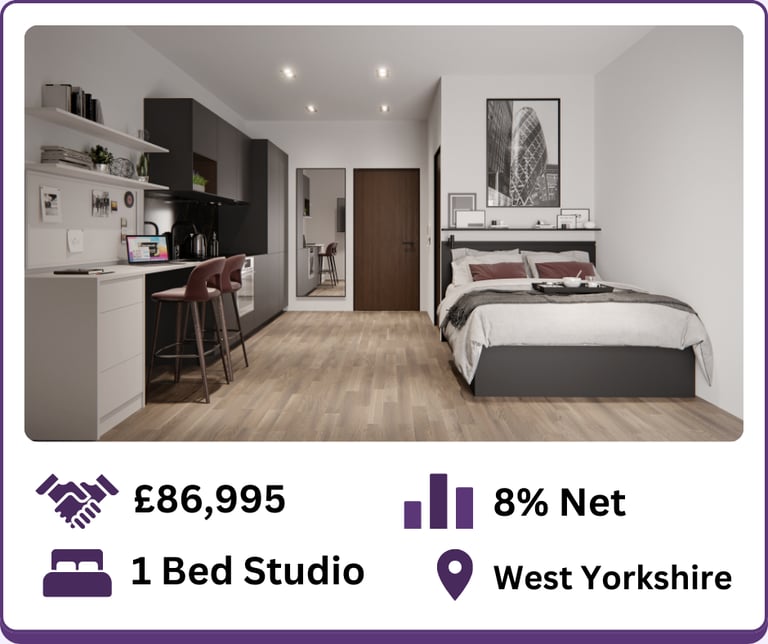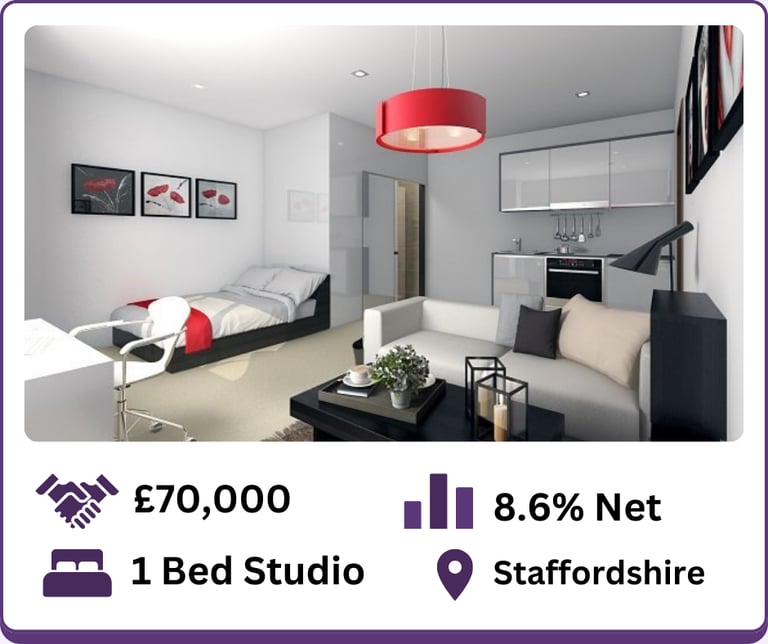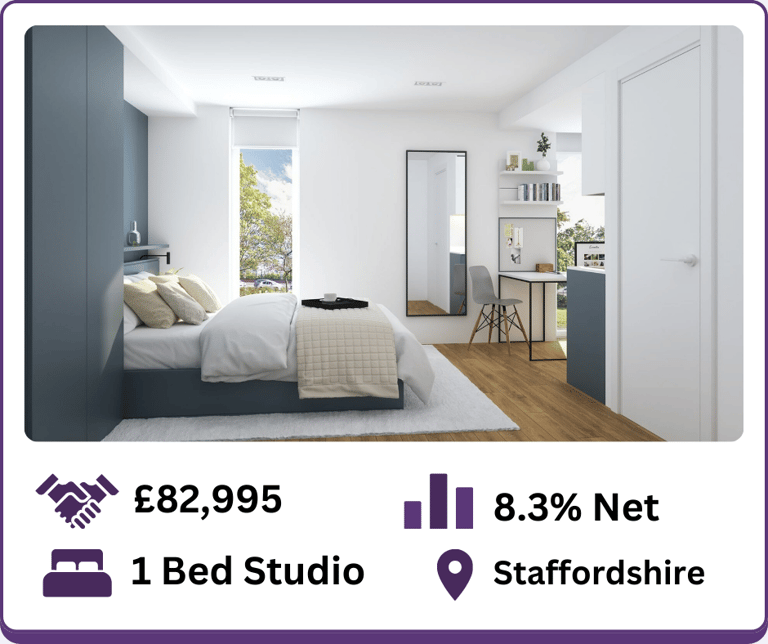
Student Accommodation
PROPERTY STRATEGY
Explore the possibilities and discover the potential of Student Accommodation as a Buy-To-Let Strategy.
New to Student Accommodation?
Learn the basics of Student Accommodation as a buy-to-let investment strategy through our introductory video.
Below, we have provided more detailed information about Student Accommodation as a strategy for Buy-To-Let properties.

A Definition
What is Student Accommodation?
Student accommodation refers to housing that is exclusively used by university students. It is commonly utilized by students who are studying away from their parental home, either within the UK or from overseas.

Property Types
Student accommodations can either be freehold or leasehold properties depending on the owner's preference. Some property owners choose to buy large freehold houses near universities and convert them into HMOs (Houses in Multiple Occupation) to accommodate multiple students throughout the academic year. However, this approach is becoming less popular due to the rise in purpose-built student accommodation (PBSA). PBSAs are usually blocks of leasehold apartments built on or near the university campus, boasting modern amenities such as study spaces, gyms, and cafes on-site for students to use.
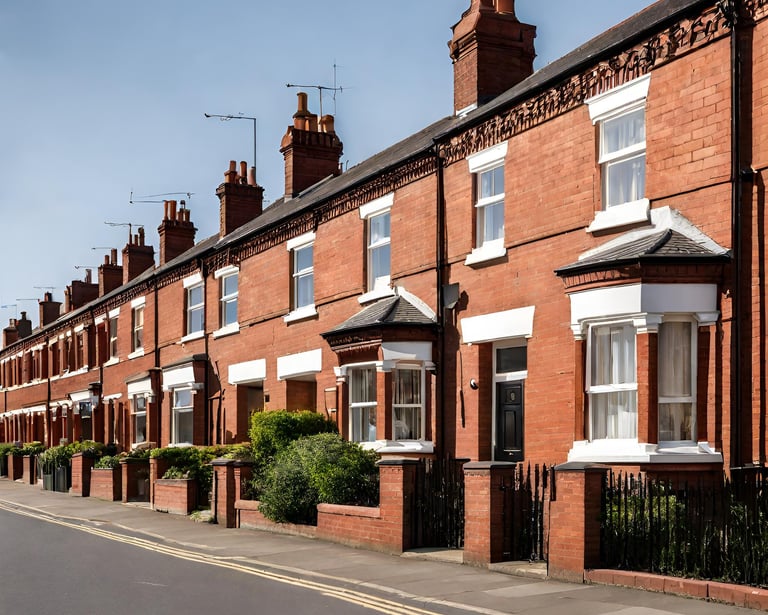





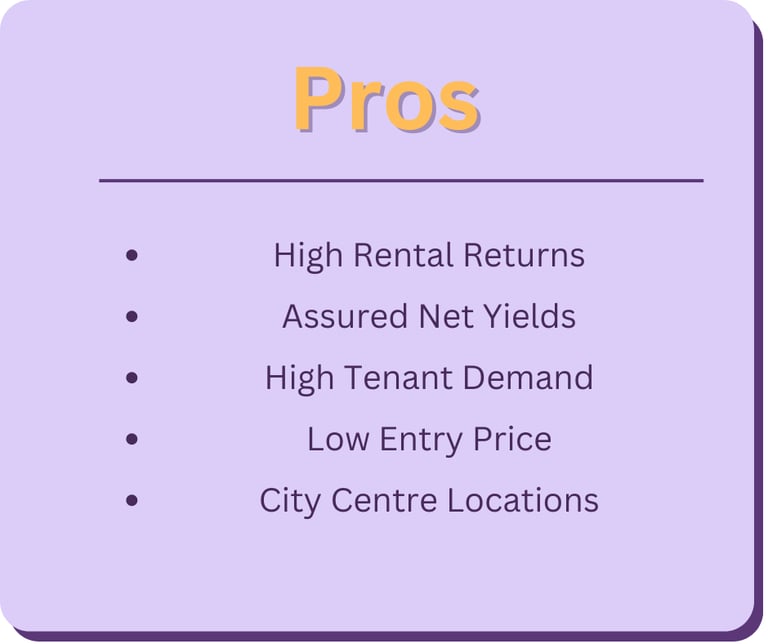

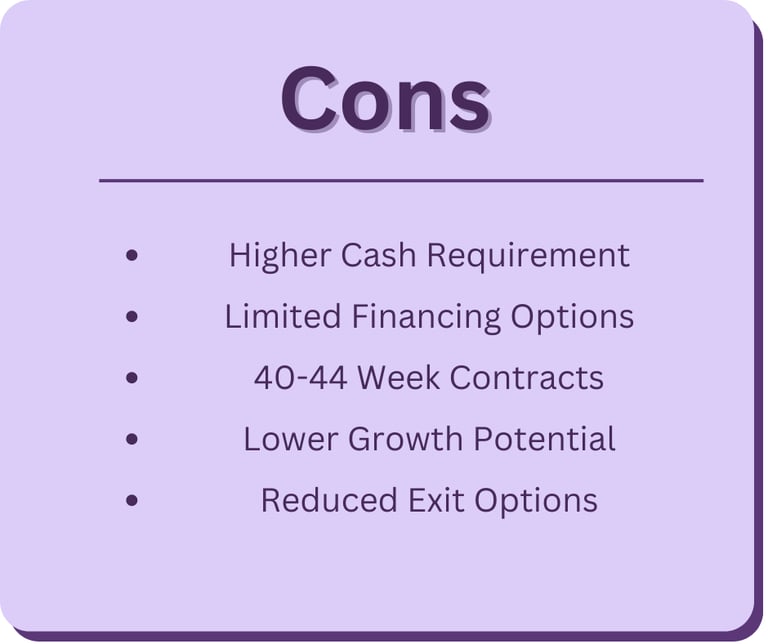

Let's take a look at some of the advantages and disadvantages of Student Accommodation
Investing in student accommodation has been a popular buy-to-let strategy for several years.
This is because the rental market returns are often higher than those for single-family homes. The limited supply of housing compared to the high demand from tenants, coupled with the fact that student properties are let on a room-by-room basis instead of the entire property, contributes to these higher returns.
Student accommodation typically has a prime location near a university, giving students easy access to transportation and nearby facilities.
With Purpose Built Student Accommodation (PBSA), the initial investment is usually lower than other strategies, and properties can be purchased for under £100,000.
Although there are numerous benefits of owning student accommodation, there are also some downsides to this strategy.
While PBSA offers a lower price point into the market it usually requires the purchase to be made in cash as there are minimal lending options available from mortgage lenders.
As the tenants of the building are students and the academic year lasts for 40 weeks in a calendar year, most tenancies are aligned with this schedule. This means that the owner of the property may have periods of vacancy, during which the building will not be generating any income.
As student accommodation is a more specialized form of tenancy, the value of the property tends to grow at a slower rate and is largely driven by rental returns, similar to commercial property. This also means that when you decide to sell the property, it may be less attractive to potential buyers and you may have to seek out another property investor as your buyer.
How much do I need for Student Accommodation?
Cash Requirement
Depending on the route you go down for Student Accommodation, leasehold PBSA or freehold HMO there are two different levels of cash required. It is also worth noting financing PBSA is usually unavailable on a Buy-To-Let mortgage so these purchases will need to be made in cash.


On the lower end of the market, PBSA apartments are available in blocks that can be purchased at lower prices. These properties can either be purchased as existing student accommodation or can be bought off-plan while still under construction. To purchase one of these apartments, you would likely need a starting budget of approximately £60,000 in cash, depending on location.
Depending on the house prices in the local area around a university, a starting budget of around £150,000 could be sufficient to purchase and convert a property for student accommodation. However, various factors can influence this approach, and the actual cost may be significantly higher, particularly if the property requires extensive repairs or renovations before being let.
Another way to own these properties is by purchasing a property, which has already been converted to a student HMO and is already tenanted. The cost can vary depending on the location and condition of the property, for a good starting point, a budget of around £170,000 should mean there are some opportunities available to you.

Sourcing, Converting and Renting
We've scored this one a 4 out of 5 difficulty if you're trying to source, convert and rent your own Student Accommodation.
Finding suitable properties near university campuses isn't always too challenging however the prices within these local areas close to the university are often higher due to the demand from property investors wanting to convert them to student accomodation making it more difficult to find a suitable property within your budget for the project.
Once you've acquired a suitable property, the conversion to an HMO can be a steep learning curve if you've not had much experience with it. Local authorities have different regulations for HMOs compared with single-family buy-to-lets so it's important to have a good knowledge of this within the local area you are purchasing.
As with most strategies, purchasing a property that is already being used for this purpose is easier than sourcing one and converting it yourself.
Leasehold Purpose Built Student Accommodation (PBSA) tend to be easier to find for sale as they often contain a large number of units in one building. Plus there are a number of these blocks being built near universities across the country.
Freehold Houses in Multiple Occupation (HMOs) can be a bit harder to find as there are fewer of them on the market at any given time.
Once you own a student let, it can be a relatively hands-off investment strategy. This is because a student management company is often used to take care of the day-to-day tasks of owning the property. Tenancies usually last the full academic year and the management agent will market the property to secure new tenants in advance of September.
Purchasing Existing
Level of Difficulty

How much work is involved with Student Accommodation?
Owner Involvement
When the purchasing element is removed from the equation and you focus on the ongoing ownership, Student Accommodation has low involvement by the owner, particularly if you work with a student letting agent local to the university.


Student Accommodation typically has a contract length of 40-44 weeks, which aligns with the academic year. This means that the property will be vacant for 8-12 weeks during the year. Property owners can utilize this time to schedule annual maintenance and carry out any necessary refurbishments. Since students usually stay for only 1-2 years, there may be a higher tenant turnover compared to single-family rentals. Depending on whether the owner sources tenants and manages them independently or uses a student management agent, this may create additional work for the owner.
Typical Returns & Timeframes
What should you expect from Student Accommodation?

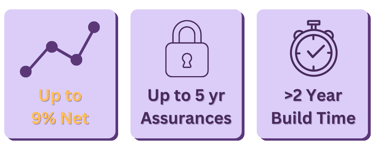
Exit Strategy
What happens if you want to sell and how easy is it to liquidate your cash?
Yes, it is possible to sell student accommodation with tenants already living in the property, just like many other property investment strategies. If there is an existing lease in place, it will typically be transferred to the new owner upon completion of the sale. The new owner will then start receiving rental payments directly from the tenants.
If you have a freehold HMO property that is currently being used as student accommodation, you may find it easier to sell it as it appeals to a wider range of potential buyers. The property could be used as a professional-tenant HMO or converted back to a residential property.
On the other hand, selling a PBSA property may be more difficult since these properties often require cash-only purchases due to the lack of financing options. You would need to look for another Buy-To-Let property investor who would be interested in purchasing your property and help you liquidate your money.
Registered Company Number: 15439671
Seven Generations UK Limited
Copyright © 2025 Seven Generations UK Limited, All Rights Reserved
PRS Membership Number: PRS043981

